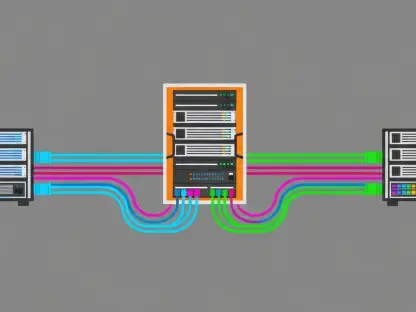In sprawling cloud estates where telemetry is the nervous system and logs arbitrate truth, a fresh set of Fluent Bit flaws turned routine observability into an attack surface large enough to warp incident response, blind monitoring, and even sway production traffic. The findings, attributed to Oligo Security and disclosed alongside AWS, hit a component that sits on Kubernetes nodes, ships in managed stacks, and lives inside countless containers. That ubiquity raised the stakes: attackers who slip past this layer can plant convincing fakes, suppress real signals, or hijack routing rules at scale. The project shipped fixes in v4.1.1 and v4.0.12, closing holes that spanned authentication bypass, unsafe tag handling, file writes, and a container-input overflow. The result was a moment of reckoning for teams that had long treated logging agents as plumbing rather than a protected perimeter.
Systemic Exposure and Root Causes
The most sobering failure sat in the in_forward plugin, where CVE-2025-12969 let configuration choices unravel intended security. If Security.Users was set without a Shared.key, the mechanism that should have proven sender identity quietly dissolved, opening the door for anyone to inject arbitrary logs. Beyond noise and alert fatigue, forged events could steer automated responses, poison dashboards, or make a real breach look benign. Tag-based routing compounded the risk. With CVE-2025-12978, an adversary who guessed the first character of a tag key could mimic trusted patterns, slip past filters, and redirect streams to their liking. In estates driven by Fluent Bit DaemonSets, those tricks scaled seamlessly across nodes, making counterfeit telemetry look distressingly authentic.
Tag handling missteps did not stop at routing mimicry. CVE-2025-12977 allowed tags to carry unsanitized values, including newlines and path traversal sequences, challenging downstream parsers and some filesystems with payloads never meant to arrive. That blends neatly into CVE-2025-12972 in the out_file plugin, where attacker-controlled tag values and an unset File parameter could lead to traversal and file overwrites, creating practical paths to remote code execution. Researchers noted this class of misconfiguration-driven file risk had lingered for years, waiting for the wrong defaults to align. Meanwhile, CVE-2025-12970 surfaced in the in-Docker input as a stack buffer overflow triggered by overly long container names, turning what should be passive ingestion into a crash or code execution vector, perfect for seizing the agent, hiding tracks, and pivoting.
Remediation, Impact, and Next Moves
The project’s response landed in two fixed releases, v4.1.1 and v4.0.12, which hardened authentication, tightened tag processing, addressed traversal, and corrected the Docker input overflow. AWS indicated that internal services dependent on Fluent Bit had been updated accordingly, while one CVE’s final severity rating remained pending. Yet patches alone rarely close the loop. Configurations deserved scrutiny: in_forward should require a Shared.key for every user, tag inputs need strict validation and character whitelisting, and out_file must use a fixed File parameter with minimal privileges on the destination path. Rate limits on inputs, schema checks on payloads, and explicit drop rules for malformed tags helped ensure that bad data could not flow quietly into trusted observability channels.
Beyond immediate upgrades, resilient operations demanded layered controls that assumed compromise of a telemetry endpoint. Rolling updates with canaries contained risk while keeping visibility online; admission controllers rejected agent pods that lacked patched versions; and SBOM tracking proved which Kubernetes nodes still ran unsafe images. Correlating logs with independent signals—cloud provider audit events, eBPF traces, or VPC flow summaries—reduced the blast radius of forged records. Teams also revisited RBAC around log directories, rotated keys used for in_forward peers, and enabled alerting on tag anomalies and write attempts outside approved paths. Taken together, these steps reframed observability as a protected security surface rather than utility plumbing, turning a brittle chokepoint into a monitored, authenticated, and rate-limited boundary.









